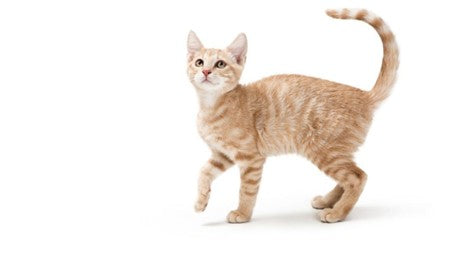
My cat walking funny is one of the 9 things it does lately, but I don’t think because it wants to impress me
” I have a 15-year-old Persian cat. The cat is in good condition, runs around the apartment, and I feed it well, etc.
However, 2-3 days ago, it started walking funny, limping on the back right leg and stopped eating. After that, she stopped going outside. Now she moves only to the sandbox and slowly drags her leg.
I visited the vet, and the vet found no wounds on the paw, and the foot was not swollen.
According to the vet’s advice, I should observe her for a few more days to see if she will calm down or not. If she doesn’t calm down, she must have her leg x-rayed.
What I am interested in is, apart from sprained ligaments or fractures, is there some kind of disease, given the cat’s age?
Is there any natural pain relief for cats with arthritis, if that’s the case? “
My cat is walking funny like she is cat drunk
Generally, the Persian cat breed is prone to patella luxation and hip dysplasia. Both diseases are hereditary but can also occur as a result of trauma.
Then, arthritis is much more common in older cats. Limping or stiff gait symptoms are often shown during cold or wet weather. Sometimes limping goes away on its own within a few days or lasts longer.
One or more joints can be affected by this condition. There are two types of arthritis in cats. One, which occurs less frequently, is associated with overuse of a single joint over a long period and aging.
The second type is more common and is associated with the development of arthritis over a more extended period of time due to joint instability such as hip dysplasia, bony defects, damage caused by trauma, or cartilage defects.
Also, specific versions of arthritis occur in cats. Progressive polyarthritis affects several joints simultaneously, and there is no specific therapy, only pain control.
If your cat is walking funny, you may try natural pain relief for cats with arthritis.
Next, calicivirus infection, in addition to infecting the respiratory system and causing discharge from the eyes and nose, can also cause inflammation of the joints.
It usually causes short-term lameness and is treated with anti-inflammatory drugs and pain relievers.
Arthritis caused by a bacterial infection is most often the result of a bite and wound infection. Treatment must be undertaken immediately to prevent further damage to the joint structures.
I should mention that lameness or, more often, an unusual way of walking can also be a consequence of metabolic diseases, such as diabetes mellitus. It occurs due to a disorder in the transmission of nerve impulses and is often mistaken for a mess of the locomotor system.
The conditions mentioned above may be diagnosed with an X-ray of the problematic part of the body, an analysis of the joint fluid, and a complete blood count and blood biochemistry.
Also, treatment depends on the type of arthritis. It may be performed by administering non-steroidal anti-inflammatory drugs, nutritional supplements to protect joint cartilage and natural pain relief for cats with arthritis.
Unfortunately, in some cats, it is necessary to use a surgical procedure to help speed up healing.
In general, cats with arthritis can live normal, active lives with proper care and medication.
There you go!
But how to recognize that your cat who is walking funny has a problem?
Cat walking funny state could be followed by these
Differences in pain tolerance in humans are different in animals.
Cats are very good at hiding the pain when suffering. The reason is evolutionary. Namely, if they show a state of distress or some disease, they are much more likely to fall prey to predators. Cats are real “masters” in this game.
However, what is good in nature in home conditions is a real pain for the owners. The trouble with the cat walking funny is that very often, you won’t be able to recognize the pain in your pet. Their pain represents a condition that usually has no apparent external manifestations.
However, veterinarians are trained to recognize the pain. This is why responsible veterinarians apply the “assume pain” doctrine. This means that even before the final diagnosis of the disease, pain-relieving agents are used in the therapy. Cats, of course, can’t speak, so they can’t tell us that something hurts. The problem here may be that your cat may receive something that can endanger her health instead of natural pain relief for cats with arthritis.
Ok, let’s see what behavior your cat may perform if in trouble.
Change in activity level
If the cat walking funny becomes less active or begins to sleep more, you should think about pain-related discomfort. Arthritic cats do not want to change their body position or avoid jumping on higher pieces of furniture that they used to do regularly. They can also become hyperactive, restlessly run, jump and find it challenging to find a resting position.
Biting and licking
Usually, owners associate increased biting and licking of body parts with the presence of parasites or allergies. However, cats have a habit of licking or nibbling on those parts of the body that are in pain. This is a significant symptom because it can cause skin damage susceptible to various bacterial or fungal infections.
‘Advertising’
Almost everyone can recognize if a cat meows and howls loudly as a sign that the pet is in pain. On the other hand, the purring that we usually identify as a sign of pleasure can indicate a painful condition. This is often done by cats who have developed an extremely close relationship with their owner.
Changes in the daily routine
If the cat suddenly loses its appetite, it may be a sign of suffering from pain that prevents it from eating normally. Likewise, one should suspect a problem in the oral cavity and the stomach if it is accompanied by nausea and vomiting.
For cats who habitually use the toilet and start to avoid it, there is every chance that they have some pain in their joints because it is difficult to jump over the high sides of the litter box. In addition, cats in pain very often avoid their daily dose of cuddling with their owner, so if you notice that your cat no longer approaches you to be petted and scratched, seek the help of a veterinarian.
Changes in attitude and posture
Cats in pain often have a body posture described as “little old men.” They have a stiff posture, walk cautiously and slowly, and avoid the usual, almost athletic jumps to and from high surfaces. If they feel pain in the abdomen, they usually have depression in the back and pull in the stomach. Cats that have suffered an injury caused by a diaphragmatic hernia sit hunched over and try to breathe “from the belly.” These cats will never lie down because they are in pain due to difficulty breathing. Of course, there is also avoiding leaning on an injured limb, but then it is already quite clear that you should seek the help of a veterinarian.
Facial expression
Realistically, changes in a cat’s facial expression are difficult to notice. Cats don’t have what you might call “pain grimaces.” However, some facial signs can still be recognized when a cat is in pain. Staring “into space” with glassy eyes or staring at nothing can be signs of suffering pain. In addition, stress and pain can cause the pupils to dilate. Unlike dogs, cats do not pant. If you notice that the cat is panting for any reason, it is a sign that it is in pain and that you should urgently seek professional help.
Aggressiveness
Some cats are not overly gentle and friendly from birth. Therefore, it is difficult to recognize the level of “normal” aggressiveness in them. However, in cats that are gentle, well socialized, and friendly towards people and other animals, any act of aggression can be interpreted as a state in which they are in pain. If the cat suddenly starts snorting, scratching, or biting the owner and household members, help should be sought. With cats in pain, this is one of the ways she says she wants everyone to leave her alone.
Fur condition
Cats are known for paying great attention to the care of their fur.
Painful conditions caused by arthritis make it impossible for the cat to position itself properly to clean the fur on some parts of the body. If you notice a change in the quality of the coat, shedding, or dandruff and dirt from the environment, it is almost certain that the cat is in pain and that you should seek the help of a veterinarian.
Pain management in cats that walk funny
Until recently, cats’ pain management and pain reduction options were quite limited.
Fortunately, with the development of veterinary medicine and pharmacy, effective drugs today enable the successful treatment of pain in these pets. However, it is imperative to know that no medications used to control pain in humans should be given “by heart” to cats.
Medications such as Tylenol can be fatal. Therefore, if you notice that the cat is in pain, do not give it medicines from your home pharmacy.
If you don’t know any better, seek the help of a veterinarian, as the ingredients in some pain relievers can be highly toxic to cats.
Diagnosis and natural pain relief for cats with arthritis
A clinical examination and x-rays are necessary to determine if the cat is suffering from arthritis. In addition, of course, the information that the owner will give the veterinarian about the observed changes in behavior is also essential.
The treatment depends on whether the cat has osteoarthritis or rheumatoid arthritis. Vets use medicines based on corticosteroids, anti-inflammation, or antibiotics.
However, never give your cat aspirin, acetaminophen, or ibuprofen. Although commonly used to treat arthritis in humans, these drugs can be fatal to cats.
Preparations based on glucosamine and chondroitin are also used. In addition, medical diets have also been developed for therapeutic purposes, i.e., foods that contain ingredients that reduce pain, promote joint lubrication, and stop cartilage loss.
What can be an alternative?
If you choose a natural approach for yourself, I bet that if it could talk, your cat would also choose something that may help her without danger.
I am talking here about supplements specially made for cats—natural pain relief for cats with arthritis.
Superflex VS Advanced Cat Formula is a supplement for all cat categories. The goal of its application is to strengthen ligaments, ensure proper development of the skeletal system, and regenerate and protect joints and cartilage. Its purpose is to relieve pain in cats that walk funny caused by changes caused by aging and the reduction of synovial fluid secretion.
Superflex-VS Advanced Formula for Cats is a balanced formula of deer velvet antler, green-lipped mussel, fish powder, and ginseng especially developed for cats showing the symptoms of arthritis and joint stiffness.
Preventive use of Superflex VS Advanced Cat Formula is recommended in younger cats to prevent skeletal system deformities, weak joints, and soft tendons.
In the end …
Try to keep the cat in good health. Regular activity is the first on the list of desirable preventive measures.
ORIGINALLY PUBLISHED on blog.manukanatural.com



Leave a comment